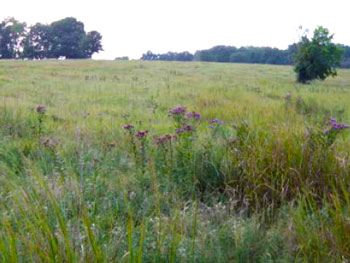
In our more than 40 years on this farm, we’ve learned a few things about the best management practices for our grasses and our animals.
- Our animals never receive preventative antibiotics or added hormones.
- Our animals spend all or most of their lives on the grasses, depending on the species and their shelter needs at birth.
- Our luscious prairie grasses and cool-season perennial grasses are not treated with chemicals. Certain invasive species of brush do occasionally receive spot treatments by hand if they cannot be controlled by managed grazing techniques.
- Our premium cattle genetics are adjusted to native grasses over nearly four decades of careful breeding.
- Due to raising and processing practices, 100% grass-fed meats like ours are less likely to harbor the strain of E.coli bacteria that has caused deadly illnesses in our food supply.
Research indicates that animals raised on natural forage translates into meat with higher levels of Omega 3 fatty acids (the good ones), lower levels of Omega 6’s (the bad ones), and a better overall ratio between the two.
Learn more
Learn more
The grass Mother Nature made right here in Kansas converts perfectly into a premium protein that offer the following benefits:
- Naturally lean, yet tender and flavorful (testing at 90-93% lean)
- May improve levels of “good” cholesterol
- Low in saturated fat
- A more favorable Omega 6:Omega 3 fatty acid ratio than traditionally raised beef.Two rounds of testing for fatty acid profiles using cuts from multiple animals have revealed O6:O3 ratios of 3:1 and 2:1 respectively. Nutritional guidelines recommend consumption of foods with O6:O3 ratios of less than 5:1. Please email us if you would like more detailed information on nutritional testing.
Learn more about how farmers and ranchers like us are utilizing the land to enrich our environment as well as our health, through careful animal and earth husbandry.